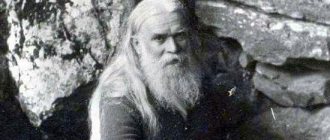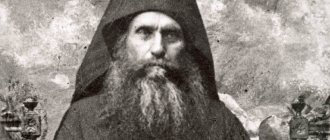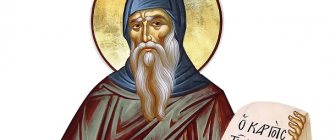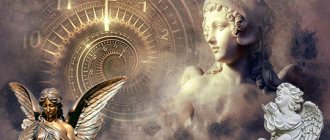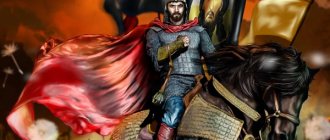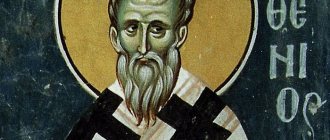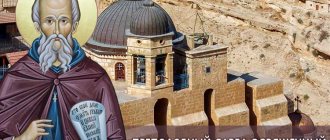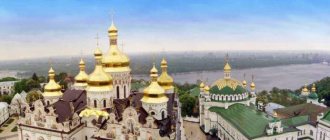Orthodoxy owes its appearance in Japan to the Russian missionary Saint Nicholas (Kasatkin) of Japan. Arriving in the land of the rising sun in 1861 as rector of the consular church, he independently learned the language from scratch and almost single-handedly created the Japanese Orthodox Church. Today, services in Orthodox churches in Japan are conducted mainly in Japanese, and not only Orthodox Christians, but also representatives of other faiths come to pray.
Cathedral of the Resurrection of Christ (Nikolai-do), Tokyo, 1891
The most famous Orthodox cathedral in Japan in one of the busiest areas of Tokyo is named after the founder of Orthodoxy in Japan, Nicholas of Japan (in the world Ivan Kasatkin), who initiated the construction of the temple. The plan of the cathedral was created by St. Petersburg professor of architecture M.A. Shchurupov, and the images for the wooden three-tier iconostasis were painted by the St. Petersburg court icon painter V.M. Peshekhonov. The bells were also brought from Russia. During the Great Kanto Earthquake of 1923, which claimed many lives, the temple was severely damaged. The bell tower collapsed and pierced the dome, and a terrible fire destroyed the interior, but was later restored. 90 years after the tragedy, new bells were raised to the cathedral - they were cast in the Yaroslavl region.
AN EXTRAORDINARY JOURNEY: ORTHODOX JAPAN
Recently, our columnist Alla MITROFANOVA returned from this country. She tells how the Japanese come to this “inconvenient” faith in complex ways. And how much we, from whose ancestors we once learned about Orthodoxy on the Japanese islands, can learn for ourselves from their experience today.
Japanese Orthodox Church
The Japanese Orthodox Church was born on May 18, 1868, when Hieromonk Nikolai (Kasatkin), in the small house of the rector of the church at the first Russian consulate in Hakodate, secretly baptized the first three Japanese who, after careful study, wished to accept the Orthodox faith. These were the former priest of the main Shinto shrine in the city, Sawabe Takuma, and his two doctor friends.
And by 1912, in Japan there were already 266 Orthodox church communities, 33,017 Orthodox Christians (more than 8 thousand Orthodox Japanese had already died by this time), 43 clergy and 116 preachers, the majestic Cathedral of the Resurrection of Christ in Tokyo and more than 100 churches throughout the country. The Local Council of the Japanese Church was convened annually. The Mission operated a seminary, two women's schools in Tokyo and Kyoto, a society of translators and two publishing houses.
After Archbishop Nicholas, Metropolitan Sergius (Tikhomirov, 1871-1945) became the head of the Mission. But times of severe trials have come for the young Japanese Church. First, the 1917 revolution in Russia deprived the Mission of support and assistance from the Mother Church. Then the strong earthquake of 1923 almost completely destroyed the Tokyo Cathedral, which was restored only in 1929. Then the Second World War, the defeat of Japan, the separation of the Japanese Church from the Russian Orthodox Church for political reasons, which caused confusion and even a split in the ranks of the Orthodox clergy and believers. Only in 1970 did the Japanese Orthodox Church return to the fold of the Mother Church, receiving autonomy from it.
Today the Japanese Autonomous Orthodox Church unites three dioceses. The Church is headed by Metropolitan of Tokyo and Archbishop of All Japan Daniel (Nushiro). In his pastoral service he is assisted by Bishop Seraphim (Tsujie) of Sendai, 22 priests and 6 deacons. According to various sources, the number of Orthodox believers in Japan ranges from 10 to 30 thousand people, visiting 69 churches. However, despite the relative small number (there are about 900 thousand Christians in the country), the Japanese Orthodox Church still rests on the solid foundation on which St. Nicholas of Japan established it.
Metropolitan DANIEL of Tokyo:
For Orthodox Christians in Japan, Russia has always had a special meaning. It just so happened - Orthodoxy came to us from Russia, we have always looked up to Russia... Although St. Nicholas (Kasatkin), the Apostle of Japan, never sought to make the Japanese Church a branch of the Russian Orthodox Church. On the contrary, he asserted our independence. And yet, it was from the Russian language that liturgical texts were translated into Japanese 140 years ago, and we still use them today.
We deeply experienced everything that happened to the Russian Orthodox Church in the twentieth century. Your tragedy resonates with us too. Due to the fact that for many decades Russia was ruled by people with atheistic beliefs, and the Church was persecuted, in Japan, especially in the post-war years, it became increasingly difficult to maintain the traditions adopted from Russian Orthodoxy: after all, if pre-revolutionary Russia was for us the first example of Orthodox country, the USSR became a model of an atheistic state. All this had dire consequences for Orthodoxy in Japan. Many left the church, the churches were almost empty...
Today, if a 65-year-old Japanese is asked what concepts he associates Russia with, he will most likely answer: materialism, socialism, communism, Marxism. Unfortunately, there are almost no associations with Christianity and Orthodoxy. Many of the representatives of this generation in Japan do not even know that something has changed regarding faith in Russia.
True, in recent years, publications about the revival of the Russian Orthodox Church have begun to appear in Japanese newspapers. Even if there are few of them, even if they are rare, especially against the general background of the current, far from best period in Russian-Japanese political relations. And yet the ice melted slightly. And I am sincerely happy about this.
The most important thing for us now is not only to preserve, but also to convey to as many people as possible what we received from Russia 140-150 years ago. We must rediscover Orthodoxy to the Japanese and show its beauty. After all, about five hundred works of patristic church literature have been translated into Japanese. These works are the treasure of our faith, and they are waiting in the wings. I believe that they will soon be in demand. And we will see a new flourishing of Orthodoxy: after all, just five years ago, only 5-7 people gathered for evening services in Nikolai-do, and even then, mostly seminarians, but now 30-40 people come. And for Sunday Liturgy - several hundred. I sincerely hope that this number will continue to grow and that people will participate in worship with deep understanding and awareness. I see this as my main task.
Apostle of Japan
The preaching of Orthodoxy in Japan is inextricably linked with the name of St. Nicholas, Equal-to-the-Apostles, Archbishop of Japan (in the world Ivan Dmitrievich Kasatkin, 1836-1912). The son of a rural deacon from the small village of Bereza, Belsky district, Smolensk province, he was left without a mother when he was only five years old. My father was often sick and in great need. Vanya Kasatkin had to walk on foot to the seminary in the provincial city of Smolensk, which is more than 150 miles. But he still received spiritual education. And not only at the seminary, but also at the St. Petersburg Theological Academy, where a year before the end of the course he took monastic vows with the name Nikolai. And after graduating from the academy, he was ordained a hieromonk and appointed rector of the church at the Russian consulate in Hakodate on the island of Hokkaido, where his ministry began in 1861.
True, he could not immediately become a missionary - at that time in Japan it was still forbidden to spread Christianity under pain of death penalty. For about 8 years, Hieromonk Nikolai studied the most difficult Japanese language, history, culture, literature and customs of the people to whom he was to carry the Word of God. And if he preached, it was in secret, at the risk of his life.
The first Japanese man he converted to Orthodoxy, Takuma Sawabe, really wanted to kill him at first. But, having been baptized with the name Paul, he became the closest assistant to the Russian missionary, and then the first Japanese Orthodox priest.
Gradually the number of students of Hieromonk Nicholas grew. Dozens of his followers have already received secret baptism. Despite all the difficulties, missionary preaching in Japan was a success, and in 1869 Hieromonk Nikolai went to Russia to seek the establishment of an Orthodox Mission in Japan. A year and a half later, he returned to Japan already in the rank of archimandrite - the head of the mission established by the Holy Synod. During the absence of their spiritual father, his students in Hakodate not only did not forget his lessons, but also became ardent preachers of Orthodoxy.
Archimandrite Nicholas brought with him an assistant, Hieromonk Anatoly, and, leaving his spiritual children in his care, he himself moved to Tokyo: in 1873, the ban on preaching Christianity was lifted, and first in the north, and then in other areas of Japan, Orthodox churches began to appear .
In Tokyo, with donations from Russia and subsidies from the Holy Synod and the Missionary Society, a Mission was established with the majestic Cathedral of the Resurrection of Christ, erected in 1891. By this time, the number of Japanese Orthodox priests had reached thirty people, six thousand believers, and Father Nicholas himself became a bishop (and then an archbishop). He opened a seminary and several catechetical schools. And during the 52 years of his apostolic feat, a real Orthodox Church was created in Japan.
Vladyka Nicholas always had few assistants from Russia, and even those often could not withstand the difficult climate for Russians and were forced to leave. There was always a shortage of funds. It was very difficult to train Japanese converts to become preachers. But we also had to translate the Holy Scriptures and liturgical books into Japanese. Together with his assistant, the scholar Paul (Nakai Tsugumaro), Bishop Nicholas actually created the liturgical Orthodox Japanese language. And with all this, he tried to visit all, even the smallest Orthodox churches. All his life the saint worked to help the Japanese meet Christ, and when on February 16, 1912, at the 76th year of his life, he departed to the Lord, two hundred and sixty-six churches and houses of prayer and more than thirty thousand Orthodox Christians remained on Japanese soil.
In 1970, he was canonized by the Russian Orthodox Church. The memory of Saint Equal-to-the-Apostles Nicholas of Japan is celebrated on February 16, the post-feast of the Presentation of the Lord.
Lost in translation
Divine services in the Japanese Orthodox Church are conducted in Japanese, but it is as similar to modern Japanese as Church Slavonic is to Russian. “Clerical Japanese” uses ancient grammatical forms and vocabulary characteristic of classical religious texts, so it is quite difficult to comprehend by ear. But experienced parishioners learn the service by heart and often sing along in chorus, and passages from the Gospel and the Apostle that are read at the service are distributed in printed form in the church, and the Japanese have the opportunity to delve into the text of the Holy Scriptures, and even take it with them and reflect on it Houses.
And in Japan, a traditional literary game is popular, when famous poems, broken into parts on different cards, need to be put together. And during the time of Nicholas of Japan, a similar game was invented for teenagers with illustrations of the events of sacred history and texts describing them. To win, you need to put together as many texts and illustrations as possible.
Church of the Resurrection, Hakodate, 1859
This is the first Orthodox church in Japan - it was established as a consular church in 1858, along with the opening of the first Russian consulate in Japan here. In 1861-1869. Nicholas of Japan served here. Because of the ringing sound, which is unusual for Japan, local residents nicknamed the temple “gan-gan-dera” (“bom-bom” temple). In 1907, during a terrible fire in Hakodate, the church burned to the ground, but thanks to Nicholas of Japan, a new brick temple was built shortly before his death.
Liturgy
The Orthodox Church in Japan celebrates its liturgy in Japanese, and sometimes in other languages, such as Church Slavonic or Greek. Since many liturgical and biblical texts were first translated into Japanese by Archbishop Nicholas and Nakai Tsugumaro, a Japanese Christian and scholar of Chinese literature, their Japanese is now read archaically.
The liturgical style of the Orthodox Church community in Japan remains influenced by the church style in Russia at the end of the 19th century.
Annunciation Cathedral, Kyoto, 1903
The interior decoration of this temple has remained virtually unchanged since 1903. The temple is decorated with an elegant white iconostasis by the Moscow master Ya.E. Epaneshnikova. The cathedral houses icons of St. Nicholas the Wonderworker - gifts from Russian prisoners of war who were housed here during the Russo-Japanese War, as well as shrines received as a gift from John of Kronstadt.
Temple of the Transfiguration of the Lord, Sapporo, 1971
Here you can see the largest collection of icons of the Japanese icon painter Rin Yamashita (her baptismal name was Irina, 1857-1939). Rin came from a samurai family and was the first Japanese woman to study in Russia - she trained at an icon painting workshop in St. Petersburg. During her life, Rin created many works, including an icon as a gift to Tsarevich Nikolai Alexandrovich on the occasion of his visit to Japan in 1891. Her works are now in many Orthodox churches throughout Japan.
Recommendations
- Retrieved with permission from the Church of Japan
at OrthodoxWiki.
- https://www.bunka.go.jp/tokei_hakusho_shuppan/tokeichosa/shumu/pdf/h26kekka.pdf
- EXCLUSIVE: How the Moscow Patriarchate tramples church canons and undermines Orthodox unity in Korea. Interview with Ambrosios Zografos, Metropolitan of Korea and Exarch of Japan. Orthodox World
, February 12, 2022. - “His Holiness Patriarch Kirill visited the Church of the Resurrection in Hakodate / News / Patriarchy.ru.” Patriarchia.ru
(in Russian). Retrieved 2020-04-06. - "函館ハリストス正教会関連略年表." orthodox-hakodate.jp
. Retrieved 2020-04-06. - Saint Nicholas, Equal-to-the-Apostles and Archbishop of Japan. WASP.
- ""Orthodoxy in Korea" - Orthodox translation of the Gospel into Japanese." www.pravkorea.com
. Retrieved 2020-04-06. - “Tokyo Cathedral of the Resurrection in the history of the Japanese Orthodox Church / Local Churches // project of the portal Pravoslavie.Ru.” www.pravoslavie.ru
. Retrieved 2020-04-06. - ^ a b
"日本の正教会の歴史と現代" History and modern times of the Japanese Orthodox Church"" (in Japanese). Orthodox Church in Japan. 2008. Retrieved 2019-05-05. - ""For faith and a bomb": the amazing life of Colonel Boris Pashkovsky-Pesh." New Literary Review
(in Russian). Retrieved 2019-08-18. - Felix Corley. Svyatoslav affairs: Metropolitan Nikodim and the KGB
- Agreement on autocephaly of the Orthodox Church in America // Article X - The Orthodox Church in Japan. OCA official website.
- “Letter of the Ecumenical Patriarch Athenagoras on autocephaly 1970.” Orthodox History
. 2018-09-21. Retrieved 2020-04-06. - Meeting of the JOURNAL of the Holy Synod of the Russian Orthodox Church on July 16, 2005 / JOURNAL No. 47, July 16, 2005
- “In a sense, Christianity is in vogue in Japan today.” www.interfax-religion.ru
. January 30, 2007. Retrieved 2020-04-06. - "Daniel, Archbishop of Tokyo and Metropolitan of All Japan" (in Japanese). Orthodox Church in Japan. 2007-02-01. Retrieved 2007-08-25.
- 宗教統計調査結果 — 平成 26年 12月 31日現在 — / 文化庁文化部宗務課: See Page. 80 and 81.
- Matsushima, Maria Junko. "SAINT NICHOLAS OF JAPANESE and Japanese church singing." www.orthodox-jp.com
. Retrieved 2020-04-06.
Toyohashi Matthew Temple, Toyohashi, 1915
Matthew's Temple in Aichi Prefecture is distinguished by interesting architectural details: for example, the decor at the junction of the blades and the vertical belt on the facades is made in traditional Japanese style. By the way, the temple was built by the same architect as the church in Hakodate - Moses Kawamura.
Folk signs on February 16
The forest is noisy - to thaw or snow, crackling - to prolonged frosts.
A weak craving in a stove is for heat, a strong craving is for cold.
A lot of snow means a rainy summer.
Sparrows chirp loudly - spring will come soon.
On this day you cannot borrow money and wear black things, so as not to get yourself into trouble.
Steam over a frozen river - cold weather is coming soon.
Frost fell at night - it will be cold during the day.
The stars shine brightly in a clear sky - expect frost.
Few stars are visible in the night sky - this means bad weather.
From this day, seven morning frosts are counted - after the seventh frost, spring will finally come.
There is a strong draft in the stove, the wood flares up quickly and burns quickly - there will be frost.
A cat scratching the floor indicates a snowstorm, blizzard or strong wind.
The fish are biting well - the summer will be fruitful.
A big black bird flew to the house - bad news.
Church of the Epiphany, Nagoya, 2010
The first Orthodox church in Nagoya, Annunciation of the Blessed Virgin Mary, was built in 1913. It was completely burned down during a US air raid during World War II in 1945. The new stone Church of the Epiphany was erected only recently, it is made in the traditional Russian style, reminiscent of the medieval churches of Suzdal. For more than half a century in between, the city's Orthodox community used the house of worship for services and meetings.
Current administrative organization and statistics[edit]
The Orthodox Church in Japan consists of three dioceses:
- Archdiocese of Tokyo (Tokyo: Archbishop Daniel Nushiro)
- East Japan Diocese (Sendai: Bishop Seraphim Tsuji)
- Diocese of Western Japan (Kyoto)
The Primate of the Orthodox Church in Japan is Daniel (Nushiro), Metropolitan of All Japan and Archbishop of Tokyo (since May 2000). [15] Before becoming Archbishop of Tokyo and Metropolitan of All Japan, Daniel was the Bishop of Kyoto, and since 2001 he has also led the Diocese of Kyoto as locum tenens
.
As of the end of 2014, according to the Japanese Ministry of Culture, the Orthodox Church had 67 parishes (communities), 37 clergy, and 9,619 followers (registered members). [16]
The Orthodox Church in Japan operates the Tokyo Orthodox Seminary. The seminary accepts only religious men and provides a three-year theological education to those who expect to become elders and missionaries. The seminary also publishes a monthly magazine, Seikyo Jiho. [17]
The Orthodox Church in Japan publishes religious books, including the Japanese Orthodox translation of the New Testament and Psalms, as well as liturgical texts, available as individual texts or with sheet music. Its headquarters in Tokyo and local parishes publish brochures for believers who want further religious education.
Church of the Descent of the Holy Spirit, Tokushima, 1980
The temple is located on the island of Shikoku, where Buddhism has been especially strong since ancient times. Orthodoxy came here at the beginning of the century, but then during World War II the church burned down and the remaining 8 Orthodox families held services at home. In 1980, through their efforts, a new temple was built. Icons of Rin Yamashita can also be seen here.
Repairs - history
Saint Simeon was one of God's chosen ones. Together with other scientists, he was sent to Alexandria to translate the Holy Scriptures into Greek. In the book of the prophet Isaiah he came across the words that “the immaculate Virgin will give birth to a child.” Simeon decided that this was a typo. When he wanted to replace the word “Virgo” with “Wife,” he saw an Angel near him. The messenger stopped him, assured him of what was written and said that Simeon would live until he saw the fulfillment of the prophecy with his own eyes.
On the 40th day after the Birth of Christ, fate brought Simeon to the Jerusalem Temple, where Mary, Joseph and their little son Jesus were located. Anna the Prophetess also happened to be there, fasting and praying at the temple day and night, serving God.
This is how the meeting of the righteous Simeon and Anna took place with the Lord God, the Savior of the whole world. After Simeon was able to hold the baby in his arms and enjoy his beauty and grandeur, he almost immediately gave up the ghost. At that time he was more than 350 years old.
What can all Orthodox Christians do on February 16?
- One of the names of the holiday, “Keeper of Babies,” is associated with the tradition on this day of turning to Saints Simeon and Anna so that they would protect newborn children and give them health and well-being.
- Another holiday that is taking place today is Pochinki. On this day, they were engaged in repairing horse harnesses, as well as harrows, carts, shovels, rakes and other devices and devices that, with the arrival of spring, should go into use and must be in good condition.
- The owner, or even all the male members, have been checking and, if necessary, repairing everything that is broken or in poor condition since the fall. However, here it is worth knowing that horse harness cannot be repaired by young guys, otherwise the horse will be capricious and disobedient.
- Women should also not sit idle. In addition to washing and cooking, you need to sort through things in closets and chests, prepare clothes for the coming spring, certain tools that will be needed on the farm, when sowing in the field, garden, or vegetable garden. Sew torn items, mend holes, and so on.
- It is believed that the sooner the owners wake up and start traditional activities, the easier the work will be in the spring and all things will go well.
- The brownie on Pochinki becomes active and can run over a horse or play pranks around the house. In this regard, there are special beliefs and instructions about what needs to be done to appease the household spirit. To prevent the brownie from riding a horse, a whip and a pair of foot wraps (foot wraps) are tied to its mane. After dinner, a pot of porridge is left in the corner all night. It is also worth decorating the broom under which the brownie lives.
- You need to pay attention to the dream that you will have on the night of February 16th. Such a dream can suggest new ideas that will help with your most difficult issue, or indicate the direction in which you need to move further in order to achieve success.
